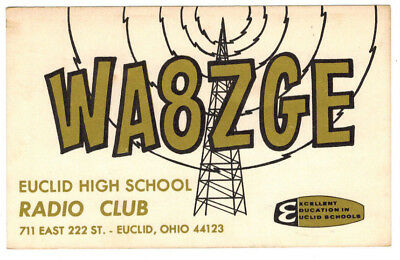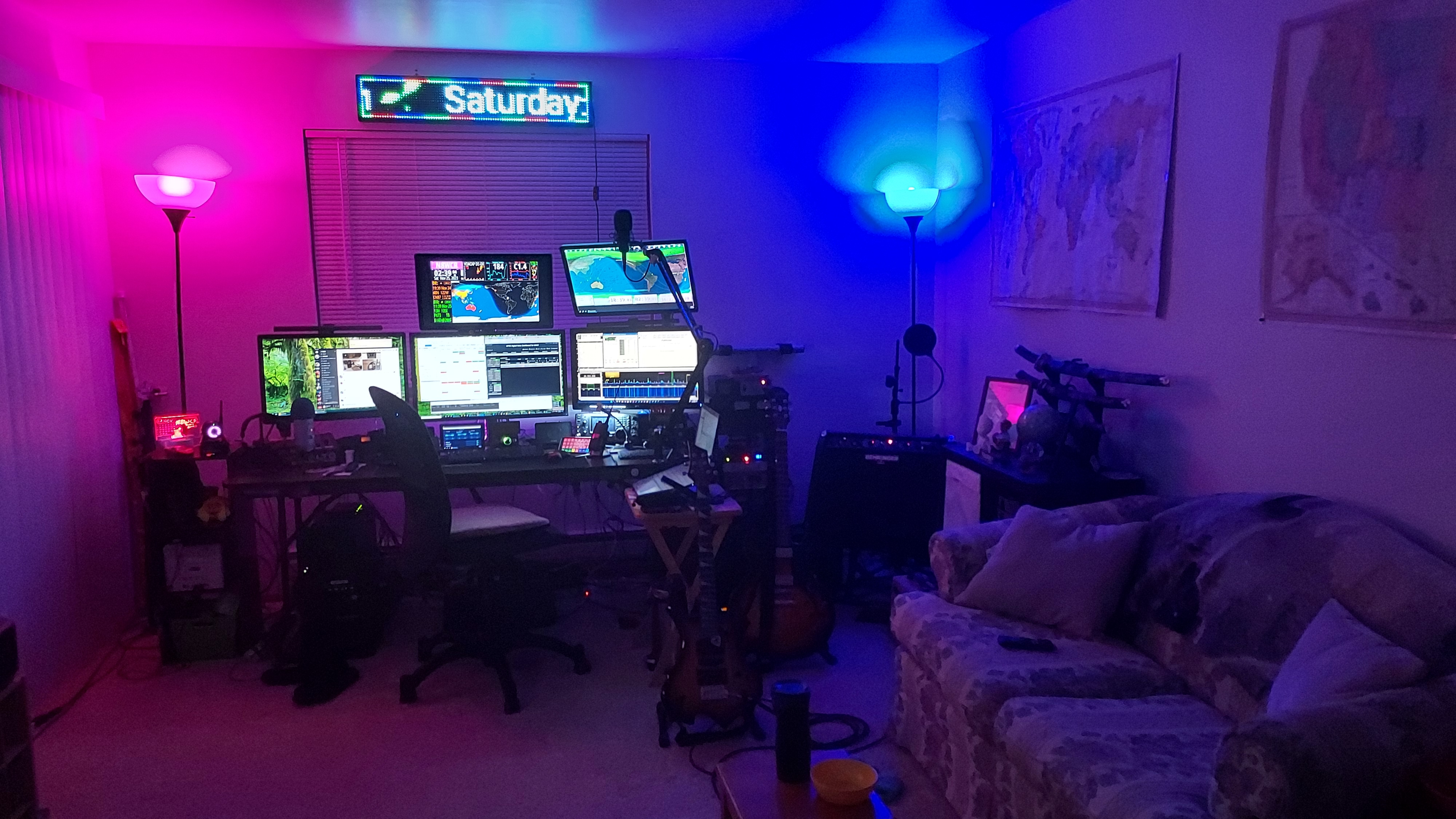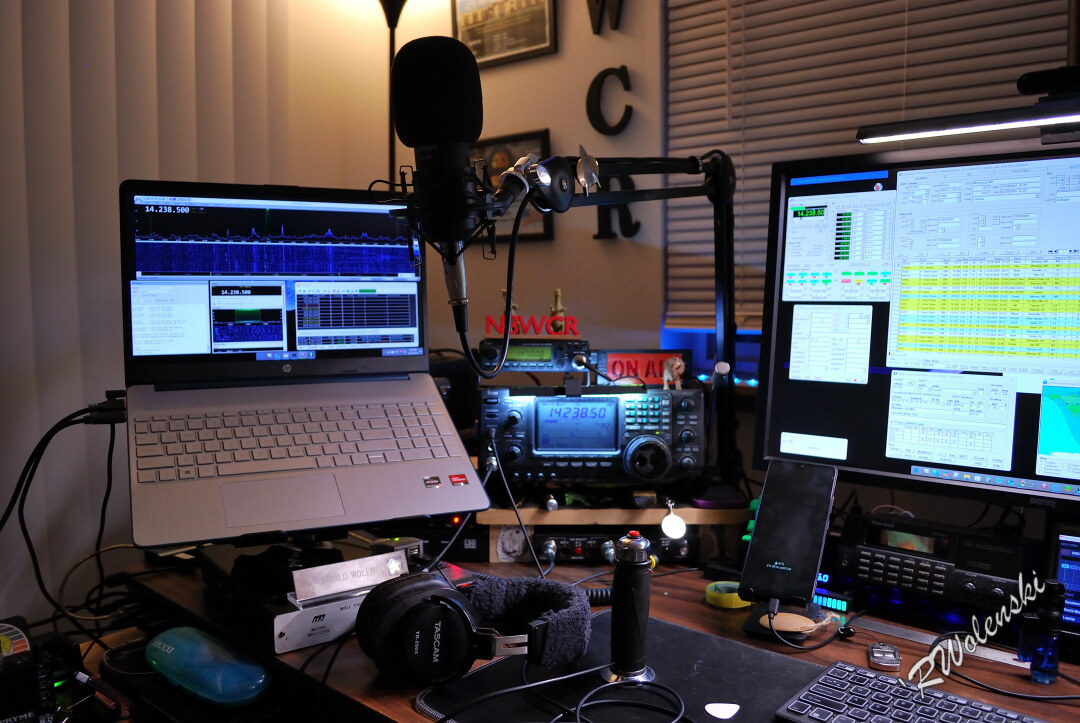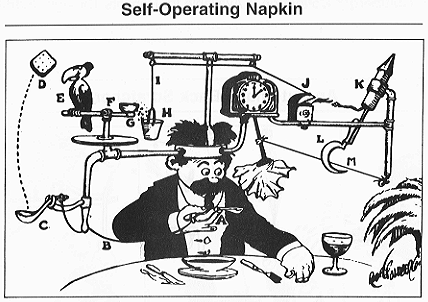About me and my equipment
Amateur radio gives you plenty of ways to get involved in radio communications. You can get involved in emergency services, during natural and man made disasters Amateur radio is usually the only means of communication left standing. Weather spotters are another area Amateur radio operators are involved, working closely with the National Weather Service spotting inclement weather. There are contests you can get involved in, or you can just rag chew with people all over the world. Myself, I like to chase the elusive DX stations. Plus I enjoy the technical side of radio communications.
My journey into the world of amateur radio was heavily influenced by my older brother, Ken, who is also a ham operator with the call sign K8YLY. Growing up, I watched him explore this fascinating hobby, which sparked my own interest in ham radio during my high school years. I attended Euclid Sr. High, where I discovered that the school had a radio club, WA8ZGE. I eagerly joined the club and quickly became immersed in the world of radio communications.
In 1971, I earned my first license, a novice ticket with the call sign WN8LJP. This marked the beginning of my adventures in amateur radio. I soon upgraded to a Technician license, adopting the call sign WB8LJP. However, as life progressed, family responsibilities took precedence, and I found myself putting my passion for ham radio on the back burner. Over time, my license expired, but the love for the hobby never really faded. In 1982, I rekindled my interest and took the No-Code Tech exam, which allowed me to obtain my current call sign, N8WCR. I was thrilled to upgrade to General class shortly afterward, and now I’m setting my sights on obtaining my Extra Class license. This next step represents not only a personal goal but also an opportunity to expand my knowledge and capabilities in the amateur radio field.
During my time in the high school radio club, we had the privilege of working with a couple of Swan rigs, specifically the Swan 500C and the Swan 250C. I developed a fondness for these classic rigs, and I’ve owned both the Swan 500C and a 6-meter Swan 250C at different points in my journey. They hold a special place in my heart, representing the early days of my ham radio experience.
In today’s digital age, I utilize the DXLab Suite for my logging and radio control directly from my computer. This software enhances my ability to manage contacts, explore the bands, and streamline my operations, allowing me to focus on the joy of connecting with others around the globe.


My main rig is an Icom IC746, a versatile transceiver that I absolutely love. It covers a wide range of frequencies from 160 to 10 meters, along with 6m and 2m, making it all I really need for most of my work in amateur radio. I operate from my home QTH in Arlington, Washington (CN88), where I’ve set up my station to maximize my communication capabilities.
Recently, I encountered an issue when the internal antenna tuner on my IC746 died. To solve this problem, I upgraded to an LDG IT-100 antenna tuner, which has been a great addition to my setup.
In addition to my main rig, I also utilize a Software Defined Radio (SDR) RSP1 Clone receiver to tune into the HF bands. For software, I use SDR Console, which works in tandem with DXLab's Commander. This combination allows the SDR to track the frequency of my IC746, effectively acting as a panadapter. I have a dedicated SDR Tx/RX switch that enables me to share the same antenna between the SDR and my Icom transceiver. When the IC746 is transmitting, the switch grounds out the SDR, ensuring clean transmission while still allowing both rigs to receive signals on the same antenna. I enjoy the flexibility and performance of my current setup, which enables me to explore the many facets of amateur radio and connect with operators around the world.
In addition to my Icom IC746, I also have an ICOM IC-229H, which adds another layer of versatility to my station. This rig is particularly useful for local communications and provides excellent performance on the VHF bands. It complements my other equipment nicely and allows me to explore different aspects of amateur radio.
In my shack, I’ve integrated several Raspberry Pis to enhance my operating experience. One Raspberry Pi is dedicated to digital modes such as FT8 and SSTV. I connect the audio from the ACC jack on the IC746 to a USB sound card on the Raspberry Pi, which enables seamless digital communication. I also have FT8 software set up to communicate with GridTracker on my computer, providing me with real-time information on the stations I’m working with. Additionally, I’ve installed tar1090, an ADS-B aircraft tracking software, on the same Raspberry Pi. This software allows me to monitor aircraft flying in my vicinity, offering fascinating insights into aviation traffic overhead while feeding the global ADSBExchange aircraft tracking site. On another Raspberry Pi, I run HamClock, which serves as a fantastic display featuring a variety of information that is beneficial for amateur radio operators. HamClock provides essential data, such as UTC time, band conditions, and frequency information, all in an easy-to-read format. This setup enhances my situational awareness while operating and keeps me informed about the best times to connect with other hams.
With these various components working together, my station has become a powerful hub for exploring the many facets of amateur radio, whether I’m engaging in casual conversations, participating in digital modes, or tracking aircraft overhead.
Getting my license
Like I stated earlier my journey began back in high school in 1971 when I first obtained my Novice license. As per the regulations at the time, I was required to upgrade to a higher class. I successfully upgraded to a Technician class license, but my code speed was not sufficient to meet the 13 wpm requirement for the General class. I held onto that Technician license for many years, but as life unfolded—family commitments and work responsibilities took precedence, and eventually, I let the license expire.
In 1992, I made the decision to return to ham radio and took the No-Code Technician exam, passing it and re-entering the amateur radio community. However, I did not pursue an upgrade immediately after that. Several years passed, and when I finally decided to take the next step, I enrolled in classes to further my understanding of the technical aspects of ham radio.
During these classes, I had a conversation with my instructor about my past experience with the Technician license in the 1970s. He informed me about the grandfather clause that the FCC had put into effect. This clause allowed individuals who had previously taken the Technician exam to be grandfathered into the General class, as the exam content back then was essentially the same as the current General exam, minus the code requirement. This information was invaluable, and I decided to take advantage of it.
In 2000, I attended a Volunteer Examiner (VE) exam session where I was able to demonstrate my eligibility for the grandfathering process. As a result, I upgraded to a General license, but interestingly, I had not taken a formal exam since 1992.
Fast forward to 2022 — 32 years later — I felt it was time to challenge myself once more. Taking the Amateur Extra exam was particularly significant for me because this time, I earned the upgrade through my own efforts, knowledge, and dedication to the hobby. I was not relying on a loophole; I genuinely earned it this time, which is why passing this exam was so important to me. On September 13, 2022, I took the Amateur Extra exam and successfully upgraded my license. This achievement represents a significant milestone in my journey as a ham radio operator, and it holds a special meaning for me. My path to this point has been long and filled with various experiences that have shaped my love for amateur radio. I want to extend my heartfelt thanks to the Greater Los Angeles Amateur Radio Group (GLAARG VEC) for their remote testing sessions. Their team was courteous, friendly, and incredibly helpful throughout the entire process, making my experience smooth and enjoyable.
Being an Extra I have become a VE for the GLAARG online exams. I figure it's time I give something back to the ham community.
You can find me on Discord in the TOADs Discord Server. I also have a YouTube channel which I post various videos, under Ron Wolenski N8WCR (https://youtube.com/@ronwolenski-n8wcr). My WinLink email is n8wcr@winlink.org
My Equipment
Icom IC746 Transceiver
Icom IC-229H 2 meter Transceiver
Alinco DR-130 2 meter Mobile
Comet SBB-5 Dual Band 2m/440 Mobile Antenna
MFJ MFJ-1260 Microphone Switch
LDG Electronics IT-100 AutoTuner
Neewer NW-700 Studio Microphone
MFJ MFJ-1270 TNC
20M MFJ Hamstick Dipole
10M MFJ Hamstick
Diamond CP-22E 2 meter vertical base antenna
40M EFH Wire antenna
Baofeng UV-B5 Dual Band HT
Radioddity GD-77 Dual Band DMR HT running OpenGD77
Pi-star Hotspot on a Raspberry Pi Zero W
My hamshack


My workspace is constantly evolving as I’m never fully satisfied with its setup. Currently, I have a laptop and a 37" monitor on the desk. I use a Raspberry Pi3 for both APRS and WSJT-X, while another Raspberry Pi3 is dedicated to running both Pi-hole and HamClock.
The radios in the shack are my Icom IC-229H for VHF, and my ICOM IC-746 with an external LDG IT-100 autotuner. I'm using a Neewer NW-700 mic on a boom.
For logging, I rely on the DXLabs Suite. Additionally, my setup includes an ADS-B receiver connected to an RTL-SDR dongle attached to a Raspberry Pi3, and an RSP1 SDR clone working alongside the IC-746, acting as a pseudo panadapter. I also utilize another RTL-SDR dongle with Unitrunker as a trunking scanner. Lastly, a Radio Shack Pro-2039 analog programmable scanner forms part of my collection.


Solar-Terrestial Data
Log Books
Club Log
QRZ.com





Top 15 entries